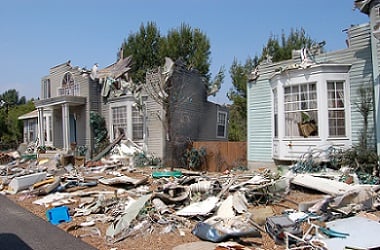

A year ago, tropical cyclone Debbie, a category-four system with gusts of more than 250km/hr, battered parts of north Queensland on Mar. 28, resulting in a damage bill of more than $1.7bn.
Almost a year on, residents are still cleaning up the mess caused by what the Insurance Council of Australia (ICA) said was the second-most expensive cyclone to ever hit the country.
Campbell Fuller, ICA general manager, told AAP that cyclone Debbie was “second only to cyclone Tracey in terms of the extent of property damage," with the Whitsunday region bearing the brunt of Debbie's rage.
Fuller said the reason why Debbie's impact was worse than some category five cyclones was because the weather system also travelled down the eastern Australian coastline.
"Debbie actually affected NSW, Queensland, and Victoria before it gave New Zealand a smack," Fuller told the news agency. "This has been an extraordinary event."
Andrew Willcox, Whitsunday regional council mayor, said that although some companies have resumed operations, it was “certainly not business as usual.” Visitors, meanwhile, were just starting to return to the tourist hotspot.
"It's not quite as good as what it was before the cyclone, but it is still a magical area," Willcox told AAP.
According to ICA, roughly 95% of all residential building claims have been finalised. But A&A Motel owner, Leah Borghero said there had been a lot of problems.
"The cleanup of the actual town is still continuing which is a little bit disappointing for a lot of people," the Proserpine business owner told AAP. "There are still tarps on roofs."
Fuller said one reason why some homes remain unfixed was because people opted for cash settlements, meaning they had to do the repairs themselves.
Another reason was because half of all buildings in the Whitsunday region were up even before the national cyclone code came into effect in 1984.
Adding to the difficulty of getting repairs done is the remoteness of the area and the difficulty of getting tradespeople, Fuller said.
"Despite all those challenges, the insurance industry is running 20 to 25% ahead of the repair curve you would typically see of a disaster of this kind," Fuller told AAP.
